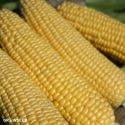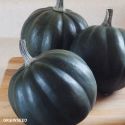 The Red Cored Chantenay carrot stands out as a favoured, versatile carrot boasting a delightful sweetness and a satisfyingly crisp texture. With tapered roots reaching approximately 8cm and terminating in a stump, the broad shoulders enhance the pulling experience. With its shorter size, this carrot is an excellent choice for container planting, while also thriving in garden or allotment settings. Notably, the Chantenay variety defies the norm and flourishes even in clay heavy soils.
The Red Cored Chantenay carrot stands out as a favoured, versatile carrot boasting a delightful sweetness and a satisfyingly crisp texture. With tapered roots reaching approximately 8cm and terminating in a stump, the broad shoulders enhance the pulling experience. With its shorter size, this carrot is an excellent choice for container planting, while also thriving in garden or allotment settings. Notably, the Chantenay variety defies the norm and flourishes even in clay heavy soils.
Maturing early in the season, this carrot is typically harvested from July through October.
Chantenay carrots, being short in stature, don’t demand deep, uncompacted soil. This quality makes them well-suited for growth in clay soils or pots.
Carrot Tips
Carrot seeds are very small and light so avoid sowing on windy days. Sow thinly to avoid waste, which can be difficult for less experienced growers – mixing the seed with fine horticultural sand for sowing can help avoid over-sowing.
Keep seeds damp after sowing by misting or watering with a very fine rose.
Some growers like to cover rows with a plank for a week after direct sowing to avoid drying out whilst the seed germinates but beware of slugs and snails.
Chitting, pre-germination, will give your carrots a great start. Take a clean piece of flat boarding and moisten it. Now spread out the Carrot seed on this, making sure, as far as possible, that one seed does not touch another, A large darning needle is an ideal tool for separating them when you have laid them out on the board.
Now set the board on a sunny window-ledge or in some similar position. See that the board is kept damp but never too wet. A mister spray is useful for this. After a few days you will see the seed beginning to germinate and can sow.
Germination will be slow at low temperatures and may take as long as 21 days. Covering with horticultural fleece or cloche will improve germination by increasing the temperature. Optimum germination temperatures over 10ºC but warmer is better.
I wouldn’t recommend starting in modules or pots and transplanting. Most often this results in distorted, multi-legged carrots.
There’s more on Growing Carrots here





Reviews
There are no reviews yet.